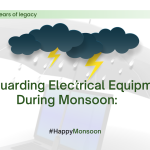
E-Waste is the fastest-growing waste stream in the world. We produce about 50 million tons of e-waste every year. Due to poor extraction techniques, only 20% of e-waste is recycled every year, even though the value of raw materials included in the e-waste is high.
The other 80% either ends up in landfills or incinerated. The incineration of e-waste is harmful to the environment, and it takes many years for e-waste to break down in landfills. The ideal solution for mitigating e-waste pollution would be introducing effective recycling systems.
There are harmful materials included in the e-waste, however, we can’t dispose of other recoverable valuable materials found in e-waste. Lowering the amount of e-waste entering the waste stream and promoting sustainable technologies can help us in the long run. Anything valuable that can be recovered and processed should be our priority.
Impacts of E-Waste Pollution on Human Health
The burning of e-waste can harm the surrounding environment. The labourers working in the same area can get diseases like cancer, respiratory diseases, lung infections, and the list goes on. While sorting out valuable materials from e-waste, workers are exposed to toxic components that would affect their nervous and skeletal systems.
Long-term exposure to toxic metals like mercury and lead can result in damage to the brain, kidneys, and nervous system. We should be more concerned about the potential threat of e-waste to human health. The situation can get better if we educate ourselves about the correct disposal of e-waste.
Adverse Effects of E-Waste Pollution on the Environment
Looking at how things are right now we are not acknowledging the reality. Most people are not aware of how hazardous e-waste is for the environment. People either incinerate it or irresponsibly throw it. Globally, 80% of e-waste ends up in landfills which affect the fertility of the soil. The effects of e-waste can’t be overlooked. When the toxic materials get into the water bodies, it threatens marine life.
Plus, the burning of non-reusable e-waste materials emits harmful chemicals that affect the quality of the air. The situation has improved by creating awareness and improving the infrastructure of recycling units. As only 20% of e-waste is recycled every year, we can still do better by introducing new recycling technologies.
Technological Innovations to Manage E-Waste Pollution
By 2030, global e-waste will reach 74.7 Mt. The rapid upsurge of e-waste pollution is the result of our dependence on electronic devices, which isn’t going to slow down any further. However, managing e-waste is important to reduce our environmental impact.
Countries around the world are joining hands for the cause. They are coming up with different strategies to mitigate e-waste pollution. Government and e-waste recyclers have undertaken steps as a part of their commitment to effectively manage e-waste in the country.
Here are some of the most prominent technological innovations that have become a breakthrough in managing e-waste:
1. Biological Filter
The biological filter made from mushroom Mycelium is able to recover 80% of the gold found in e-waste. It ensures that no harmful chemicals are used in the process of recovering materials from e-waste. This is a breakthrough in e-waste management, given chemical preparations are only able to remove 10 to 20% of the gold.
2. Silicon Circuit Boards
Silicon circuit boards, which have been developed at the University of Illinois, have the properties of reducing the impact of e-waste reclamation. Dissolvable batteries also serve the same purpose. This directly aligns with the idea of green electronics, while mitigating the raising problems of e-waste. The Silicon circuit boards can be completely dissolved in water.
3. Magnetic Sorting
Magnetic sorting ensures that the non-magnetic materials and magnetic materials are separated at the time of the scrap sorting process. For effective treatment and disposal, magnetic sorting is crucial. Installing the technology in different e-waste recycling facilities doubles the success rate of e-waste management in the country.
4. Dis-solvable Batteries
Scientists have been developing alternatives to common batteries that can be dissolved in water within 30 minutes. As a result of years of research, scientists are now developing lithium-ion batteries which are capable of delivering 2.5 Volts of power. Dissolvable ion batteries are a perfect solution. The nanoparticles within the batteries don’t degrade, but they can be safely dispersed within the environment.
How Can We Contribute to E-Waste Management?
We as individuals can take proactive steps towards e-waste management. Despite the importance of e-waste management, e-waste pollution continues to grow at a steady rate. The reasons for the growing e-waste pollution are the constant rise in population and the growing demand for electronics.
Understanding the crisis and the causes related to it is critical for taking steps. Improper e-waste disposal can be handled with the contribution of citizens. The recycling technologies introduced can have a significant effect on the finance, and well-being of the country. We as individuals can help contribute to e-waste management and make our planet greener.
- If the older electronic device is working well, then there’s no need to buy a new one. You can also sell the electronic components online or in the offline market.
- While purchasing any gadget, look for an eco-friendly label. You can check the certifications. Purchase products with Energy Star or are certified by the Electronic Product Environmental Assessment Tool.
- Limiting the number of gadgets can also work in our favour. Switch off the gadgets when you’re out or not using them.
- Understanding simple recycling technologies and disposing of your e-waste properly can help the planet. Maintaining your device is important so that it can last another year. Avoid overcharging your devices.
Wrapping Up
The rapid rise in technology has led to the increased demand for electronic devices. However, the majority of e-waste is either incinerated or ends up in landfills. The soaring e-waste pollution is harming the ecosystem and destroying natural habitats. Fortunately, companies like Connect Info Solutions India Pvt. Ltd. (CISIPL) are contributing to e-waste management and developing new extraction processes.


